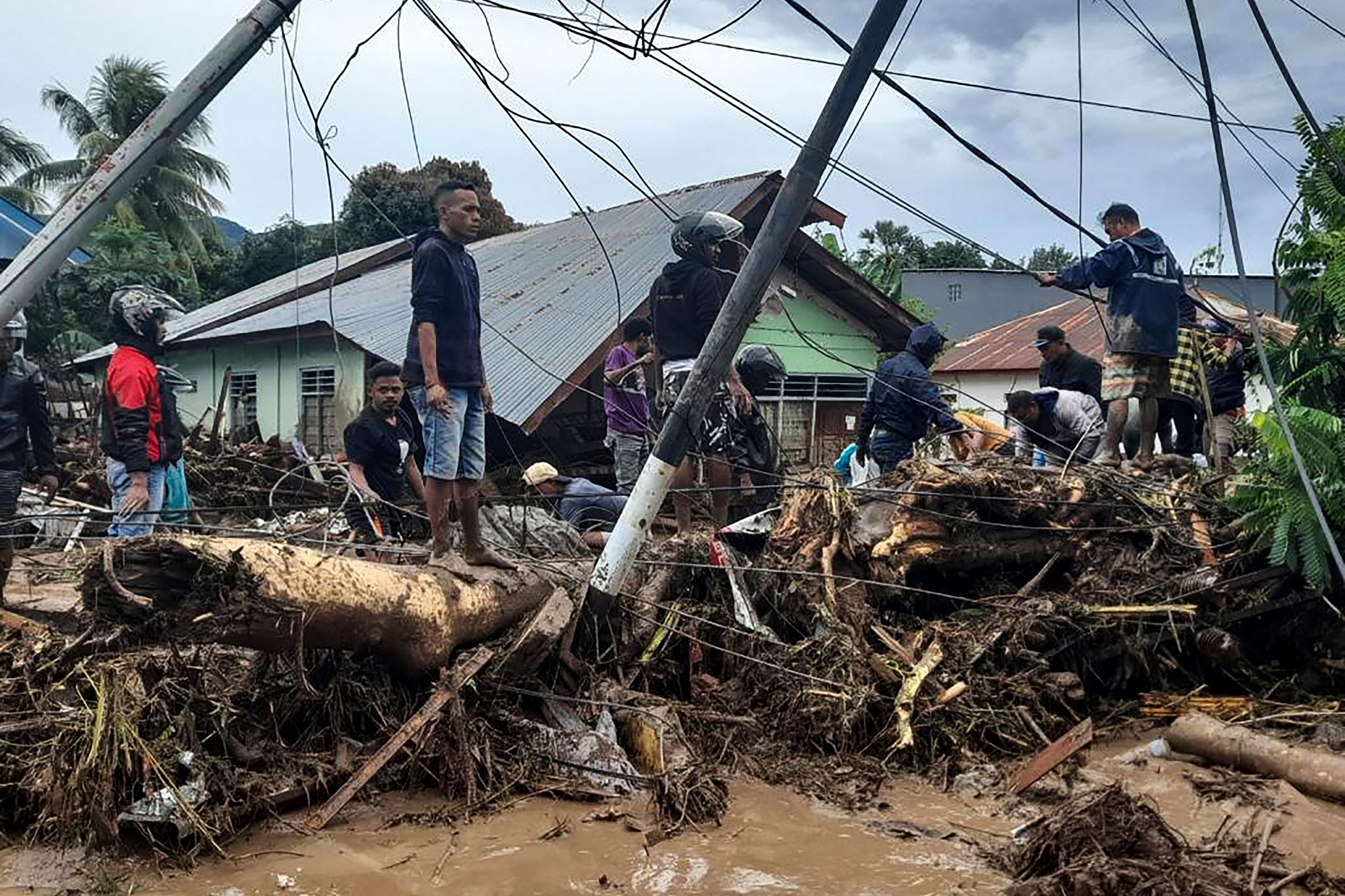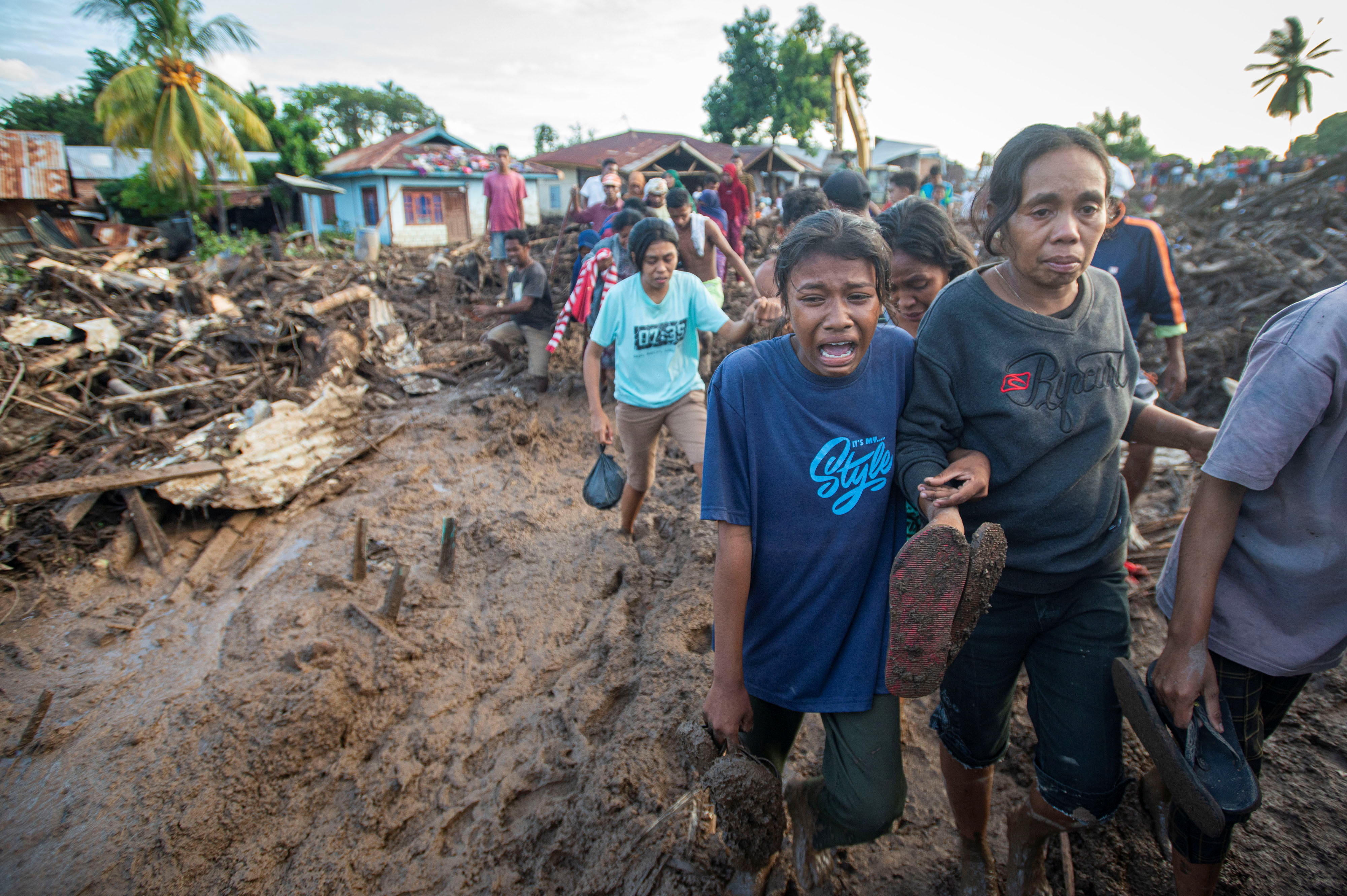Floods And Landslides In Indonesia Have Left At Least 140 People Dead and Dozens More Missing
At least 140 people across several islands in Indonesia have been killed by flash floods and landslides caused by Cyclone Seroja, with dozens more missing.

At least 140 people across several islands in Indonesia have been killed by flash floods and landslides caused by Cyclone Seroja, with dozens more missing.
The landslides began in the early hours of Sunday Apr. 4, catching people off-guard as they were asleep and causing others to be swept away by flash floods.
67 bodies have been recovered from the East Flores district on Adonara Island, making it the worst affected region, according to AP.

On Lembata island, the cyclone caused solidified lava from a volcanic eruption from last November to crash down on more than a dozen villages, killing at least 32 people and leaving 35 others missing, according to Indonesia’s National Disaster Mitigation Agency.
At least one ship has sunk at sea due to the high waves caused by the cyclone.

As rain continued to pound the region, hundreds of police, soldiers and residents dug through debris with their bare hands and shovels, searching for those who remain buried underneath the mud. Thousands of homes have been damaged, leaving thousands of people homeless.

Authorities sent in rescuers with excavators, food and medicine, but efforts have been hindered by the weather and high waves.
The National Disaster Mitigation Agency has also sent in five helicopters to reach remote areas of the islands.
Six navy ships, including a hospital ship, carrying more goods was also due to arrive on Friday Apr. 9 to help the overwhelmed health clinics in East Nusa Tenggar, which is one of the country’s poorest provinces.

Landslides and flash floods are not uncommon in Indonesia during rainy seasons.
In January, 40 people died due to flash floods in Java, while at least 11 were killed by landslides in Borneo last September, and dozens more in Sulawesi months earlier.
Indonesia’s disaster agency has claimed that nearly half of the country’s population, around 125 million people, live in parts of the country which are at risk of landslides.




